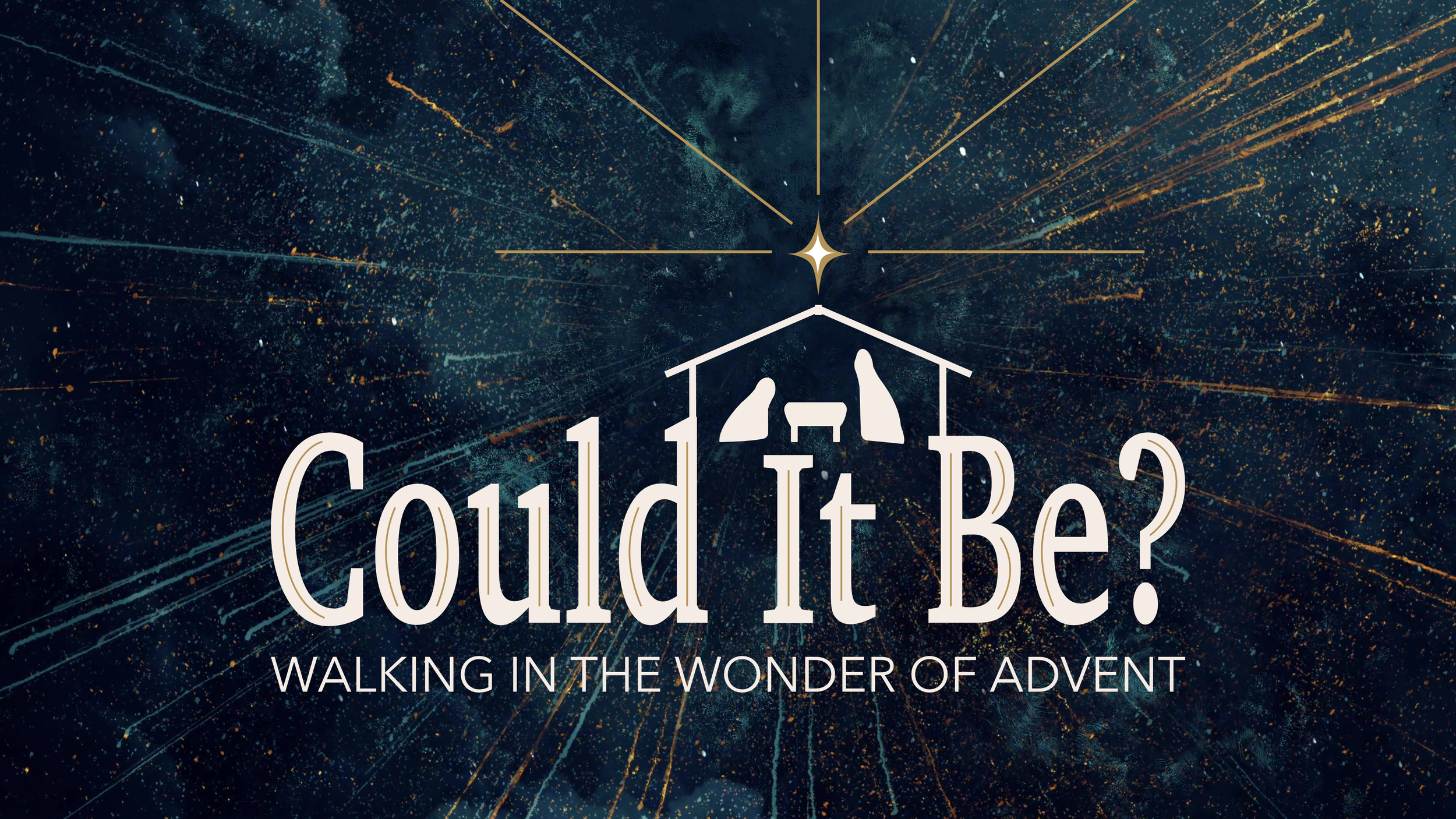Could It Be?
We all know these moments in our own lives... moments of such relief or good news that our initial reaction is disbelief. After a long season of being so immersed in waiting, in worry, in suffering, or in longing, when Good comes our way we have to pause and do a quick reality check: “Is this really happening? After all this time? It almost feels too impossible, too wonderful to be true.” At the first signs of dawn breaking into the shadowy spaces of our lives, it’s as if wonder startles us awake and stirs our hearts to ask one of its most hopeful questions: Could it be?!
Advent is a season shaped around that ancient question. Long before Jesus’ birth, for generations God’s people lived in longing, praying that someday light would break through their night. They knew suffering. They knew grief. They knew what it was to feel lost and without a home… to watch and wait in the dark. So when the prophet Isaiah spoke about the coming Messiah, his words beamed like a search light finding a people lost at sea and desperate for rescue: “The people walking in darkness have seen a great light; on those living in the land of deep darkness a light has dawned… For to us a child is born, to us a son is given” (Isaiah 9:2, 6).
Isaiah continues: He is coming “to bind up the brokenhearted, to proclaim freedom for the captives and release from darkness for the prisoners, to proclaim the year of the Lord’s favor” (Isaiah 61:1-2). Such good news! But how would He come? And when? Like the Israelites, you and I know what it is to watch and wait in hope. Where Christmas is all joy-fulfilled and “fa-la-la,” Advent is more like we’re in the dark, holding a candle, and really hoping the light shows up soon. Christians throughout history have put helpful words to the significance of this season of watching and waiting:
“Whether it is a seed in the ground, a baby in the womb, or Jesus in the tomb, hope starts in the dark.” (Barbara Brown Taylor)
“Advent begins in the dark, but the promise is that the light is coming… that [it] has come and will come again.” (Fleming Rutledge)
“The Son of God, born in a manger, is the beginning of the end of all darkness.” (George MacDonald)
“We are still in the time of waiting. The greatest, most profound, tenderest things in the world we must wait for.” (Dietrich Bonhoeffer)
“The whole point of the Incarnation is that God does not remain at a distance. He comes to us in our darkness and says, ‘I am with you.’” (N.T. Wright)
Expectant wonder, then, is a fitting spiritual posture for our hearts to adopt in the season of Advent. Though the Story is familiar, we tell it again and again each December: angels and shepherds, a manger and a star, a baby called Emmanuel—“God with us.” But if we slow down enough to let our longing do its work—if we allow our waiting to heighten our hope—we might find ourselves whispering alongside the nativity characters in fresh wonder and surprise: “Could it be?!”
The angels call the announcement of Jesus’ birth “good news of great joy,” but for those who were there—Mary, Joseph, the shepherds—it may have first felt like mystery. Could it really be that God was here, not in fire or thunder or glory but in flesh and bone? Could it be that the God who flung planets into space and kept them whirling around and around... the God who made the universe with just a word... the One who could do anything at all—was making himself small and coming down as a baby? Could it be that the Holy One wrapped Himself in our weakness, entering creation not in power but in poverty? Could it be that He’ll save us from our sins? Could it be that a simple carpenter and a humble girl could have a part to play in all this?
It almost sounds too impossible, to wonderful to be true. And yet, that’s the heart of Christmas. The Creator entered creation. The Infinite took on limitation. The Sacred stepped into the ordinary dust of the world. And if that’s all true—if, in Jesus, heaven has brushed earth—then maybe all of life can become holy, too. If Jesus is truly “God with us,” then maybe every space He inhabits becomes sacred... The stable. The porch. The faces around the table. The ordinary moments we overlook. Could it be He’s making everything sacred?
Jesus didn’t wait for the world to be tidy before He came. He came right into the middle of our chaos—into poverty, confusion, fear, and hope—and called it home. He learned carpentry. He ate meals. He felt tired. He knew laughter and tears, the warmth of friendship and the ache of loss. And by taking on flesh and entering those ordinarily human moments, He hallowed them. Frederick Buechner put it this way: “The Incarnation means that all ground is holy because God walked on it... The sacred moments, the moments of miracle, are often the everyday moments we do not stop to notice.”
““The place that the shepherds found was not an academy or an empire. It was a place where God had been homeless—and all of humankind is at home.””
Still all these years later, the Incarnation of God invites us to live with eyes wide open—to see the sacred shimmering in the everyday, even while we still long for the world to be renewed. A shared meal, a child’s laughter, a quiet moment, a weighty conversation, a familiar place or routine, a home made warm by love... By taking on flesh, God declared that nothing human is too humble to hold His presence. And now every manger reminds us of the Christmas Truth that God is not far away.
This Advent, look for the sacred in the ordinary. Keep kindling light in the dark in the ways you gather around tables and remember. Lean into the wonder Jesus’ birth inspires, letting the questions draw you deeper into awe and surprise at the familiar Story. How can the God of the universe choose to dwell in our mess? How could holiness be found in the smell of hay and the cry of a newborn? How can light truly shine in places that still feel so dark? Keep asking the question that keeps our hearts open: “Could it be?!” With Jesus’ arrival comes the answer to every longing of our hearts: “YES!” (2 Corinthians 1:20).




